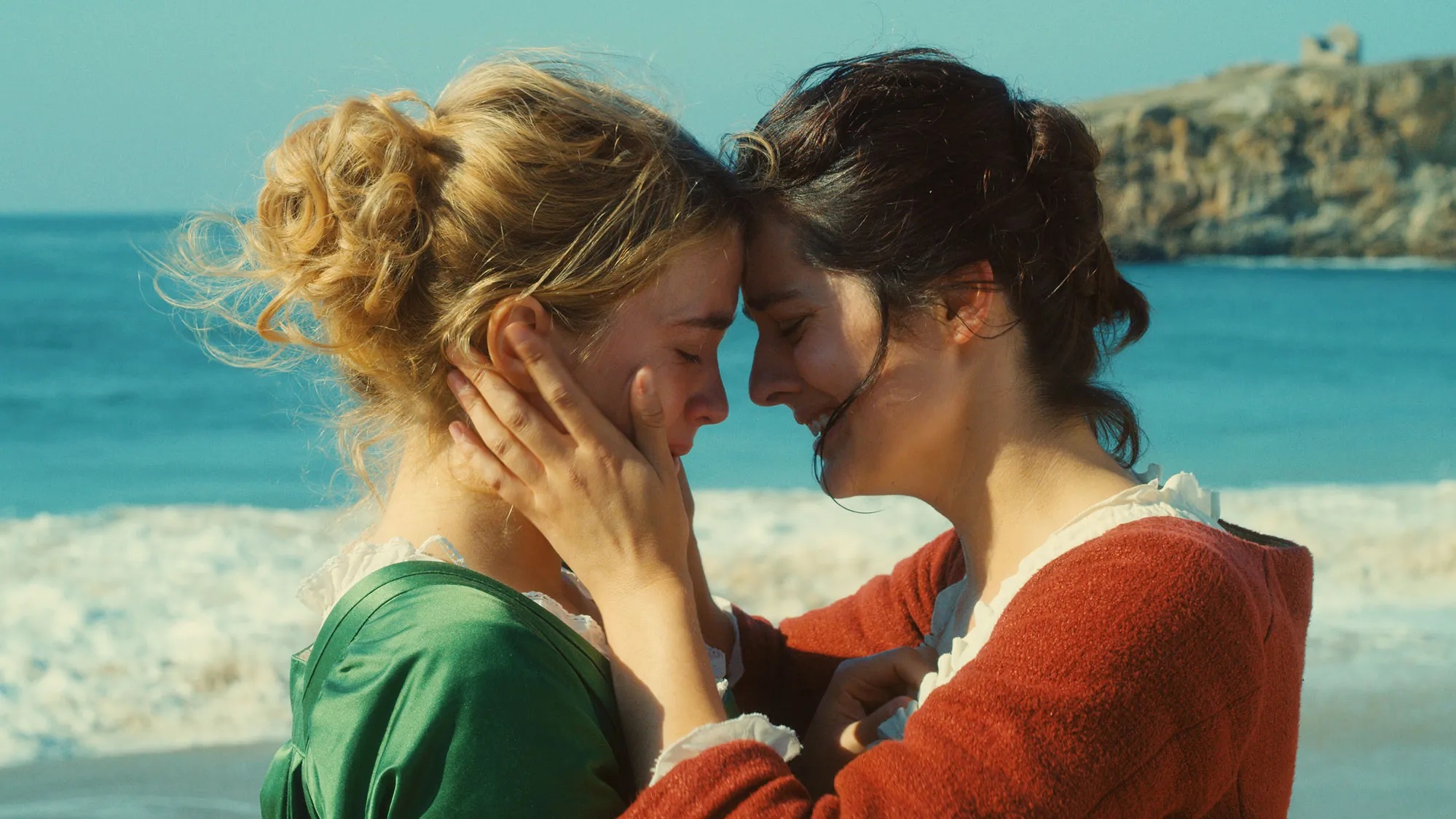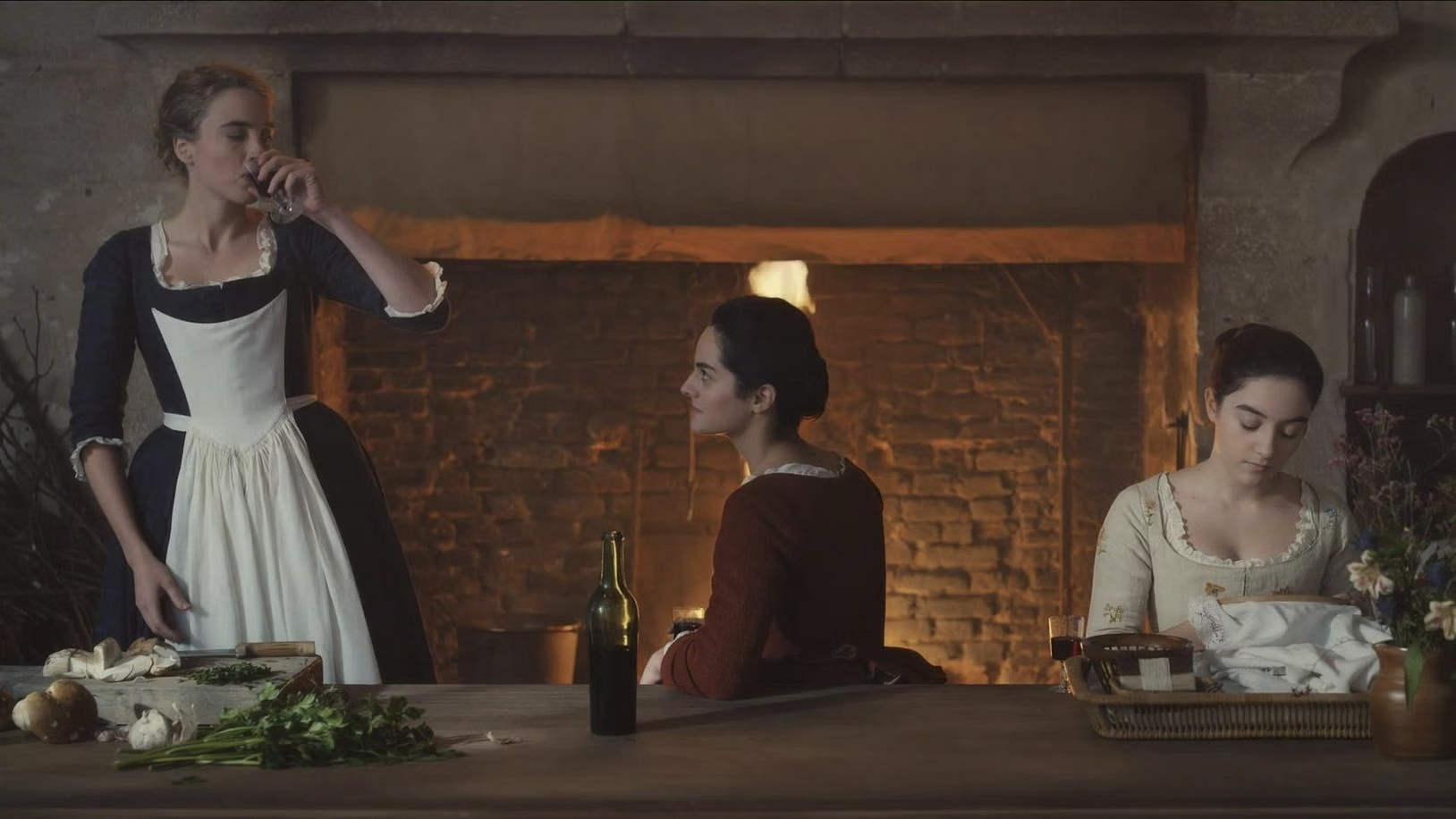I opened the 2019 Filmekimi Festival with “Portrait of a Lady on Fire,” directed by Celine Sciamma, which many critics consider one of the favorite Cannes films of 2019. The film stars Adele Haenel and Noemie Merlant, who has previously worked with the director. With its minimalist structure, the film won the Best Screenplay award at Cannes. I believe the film deserves the attention it has received, and even more, as it is a story that portrays the inevitable ending we all know.
Let’s briefly touch on the plot… Heloise is soon to be married to a groom from Milan. However, before the wedding, her portrait needs to be painted. Heloise is an introverted girl and has never posed for any painter before. Marianne, who comes to the island to paint her, decides to secretly paint Heloise’s portrait after learning about the experiences of previous painters. Approaching her as a friend, trying to make her laugh and provoke her, Marianne draws Heloise’s portrait using the thoughts that remain in her mind at night or the secretly scribbled notes. However, Marianne’s friendly technique, which she uses to be able to paint the portrait, eventually leads Heloise to open up to her. As Heloise opens up, sparks begin to fly between her and Marianne.
Portrait of a Lady on Fire has a slow pace from a technical standpoint. At the beginning of the film, which I entered with great expectations, I thought to myself, “Oh no, I will probably struggle to get through the end.” Despite never losing its initially dull tempo, the film gradually becomes more intriguing. As Heloise opens up, the film’s color also changes. The painter’s secret endeavor to draw the portrait turns into a movie with many discussion topics. The subtle dialogues, the captivating cinematography that leaves you in awe at times, and the story’s progression all keep you engaged, despite the film’s slow pace. Additionally, Helena Delmaire’s paintings, which grace all the canvases in the film, make it even more exquisite.

The theme that formed in my mind while watching the film parallels what the director wanted to convey. The film begins with Heloise not liking her portrait. Heloise decides that it should not be just any hanging painting on the wall; she wants a story, an emotion, to be added to the painting. This is a new situation for Marianne as well. As a painter who puts her models in front of her and completes their portraits in a few days, she encounters a critic who wants emotions added to the painting. Unable to accept criticism, she asks for more time, just a little more than what the mother requested during her five-day trip, which coincides with the part of the film where we see everything the director intended to convey.
The film is set in a period when hierarchy and conservative thinking dominated the household, presumably towards the end of the 1600s or the beginning of the 1700s. Whoever the head of the household is, whether the mother or the father, their decisions are considered law. With the mother being in charge, every sentence she utters is regarded as law. She desires her daughter to get married, not through arranged marriage but by her own decision. You know those times; brides cannot stay at home. While the mother is present, the weight of conservatism and formality fills the house. However, with the mother’s five-day trip, the entire hierarchy is abolished. Everyone knows their place in the pyramid, yet the gusts of the heavy hierarchy ease. Thanks to the warmth brought by Marianne, even the housemaid becomes a part of the established friendship. Heloise, who used to isolate herself in her room, opens up her introverted soul and becomes involved in household chores; she goes out with them on outings. When the pressure of the law is lifted, the house returns to a peaceful atmosphere.
This peaceful atmosphere also strengthens the relationship between Heloise and Marianne. Heloise, who has been secluded from the social world throughout her life, is influenced by Marianne’s intellectual personality and memories, while Marianne falls in love with the curious woman hidden within Heloise. The director intends not to tell a pure love story but to establish a relationship that grows through conversations, which is successfully accomplished. The film, which progresses in a dull manner, becomes more beautiful through the conversational bond formed between the characters. At a certain point, even their search for a specific herb in the meadow becomes enjoyable; we are pleased with their friendship.
During a period dominated by conservative thinking, Heloise and Marianne couldn’t be together. In fact, we receive the message that the story ends unhappily at the film’s beginning. We have no choice but to watch a story whose ending we already know. Knowing it does not end well, we derive pleasure from the characters’ togetherness. We savor something that is about to end. With the mother leaving the house, the conservative power also moves away from the household. Everyone in the house remembers that they are not just “women” confined by their gender; they are reminded of their humanity.

The daughter of the house, the painter, and the maid can sit at the same table and play cards together. The only thing that kept them away from that table was a mere ideology. One of the most beautiful details in the film is Heloise’s portrayal of abortion. The housemaid Sophie might have never had a portrait in her life. We would have had no knowledge of her existence. But with Heloise’s request and Marianne’s drawing, she now exists. She has become a memory.
The finale; it was one of the most heart-wrenching endings I have witnessed in recent years. Yes, we knew how it would end, but the detail of Heloise’s child in the painting pierces the heart like a dagger. It’s like a journey through time. Likewise, there is a subtle dressing of the conservative gaze of the era in the art exhibition. Marianne showcases her paintings under her father’s name. Because during those times, her paintings couldn’t be appreciated on an intellectual level. Through her character’s transformation, she finds the courage to say, “These are my paintings,” to the viewers, thanks to her experience with Heloise.
The final blow was delivered by Heloise’s orchestral performance. As someone who has a weakness in opera or orchestras, I found it difficult to watch the last scene. When I listen to a high-decibel opera or orchestra, my hair stands on end; my breath is taken away, and sometimes I feel like crying. Now, let’s look at it from Heloise’s perspective: someone who learned what an orchestra is from Marianne caught in an indescribable surge of emotions between the high decibels and her own memories. In one word, it was a magnificent closure, a magnificent performance; a magnificent film, Portrait of a Lady on Fire.

Cast & Crew
director: Céline Sciamma
writers: Céline Sciamma
starring: Noémie Merlant, Adèle Haenel, Luàna Bajrami
FRANCE – ITALY | 2019 | 122 MINUTES |
